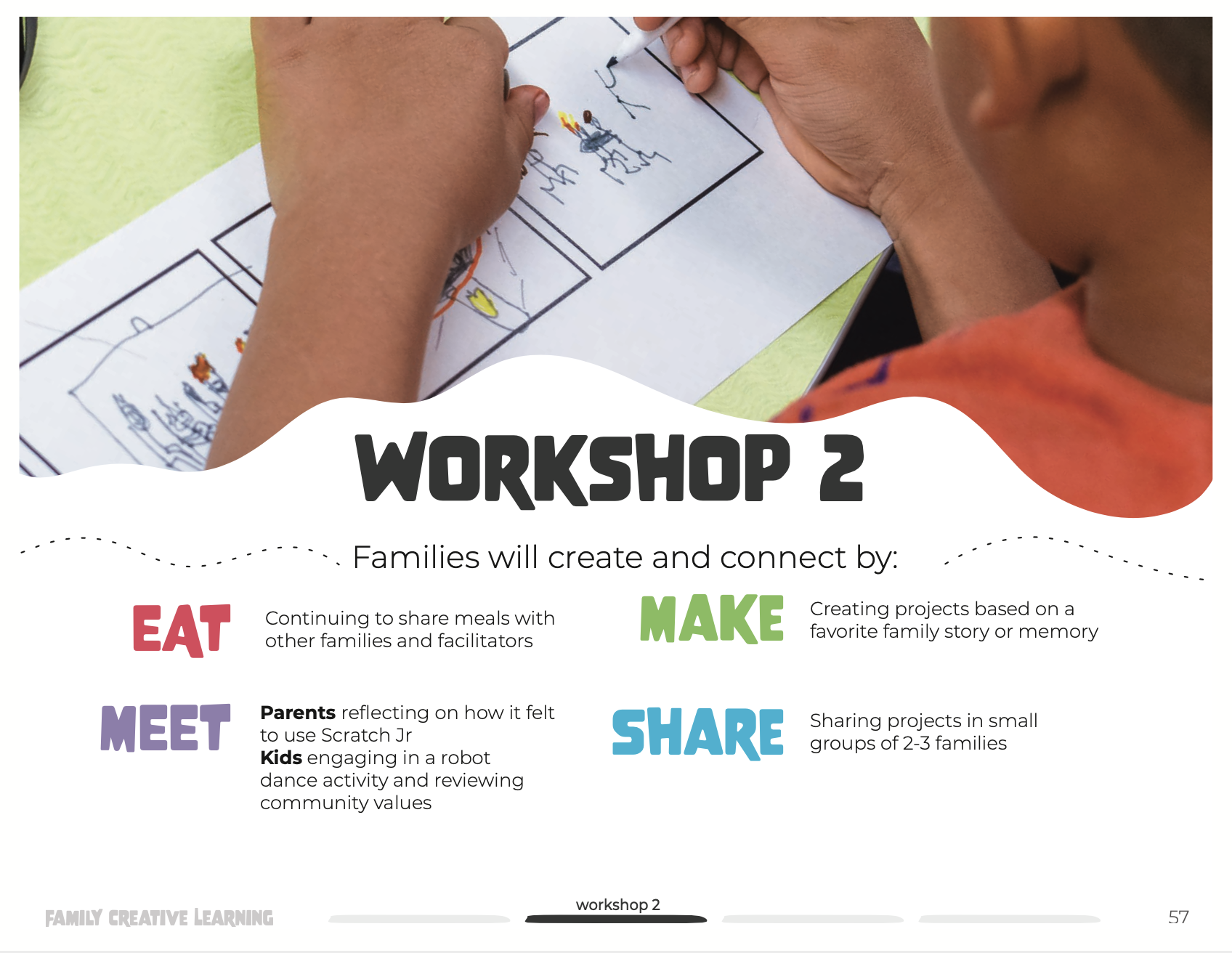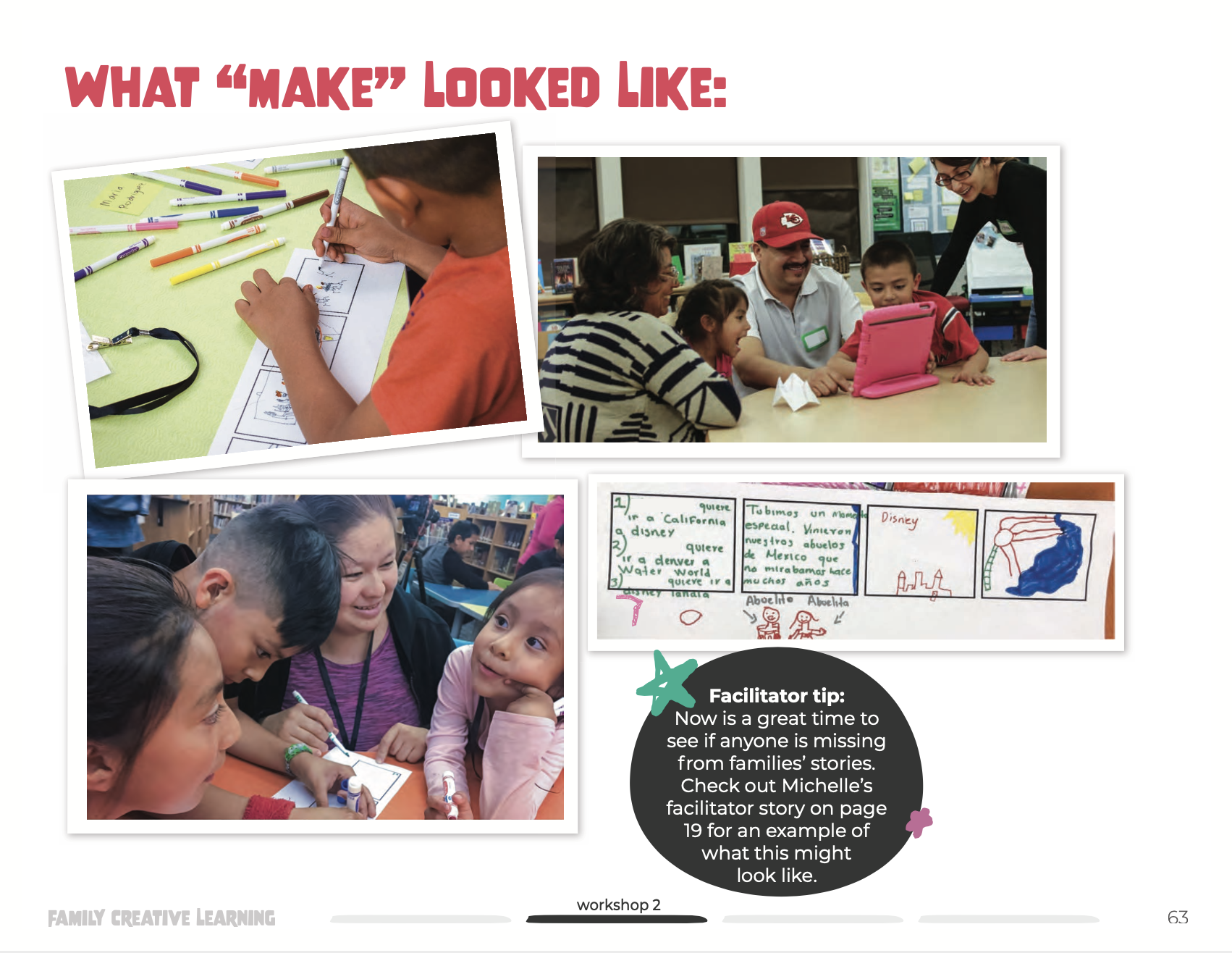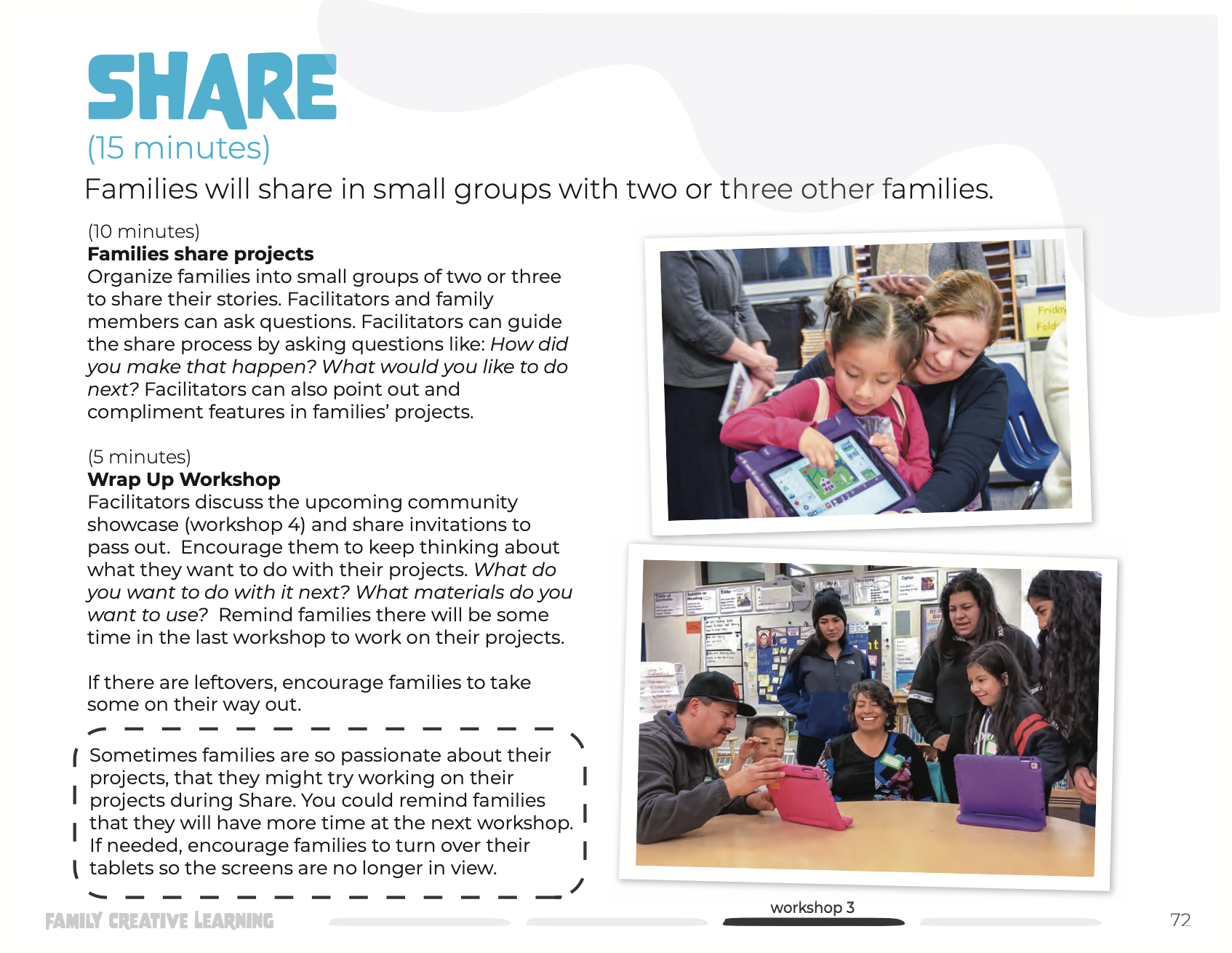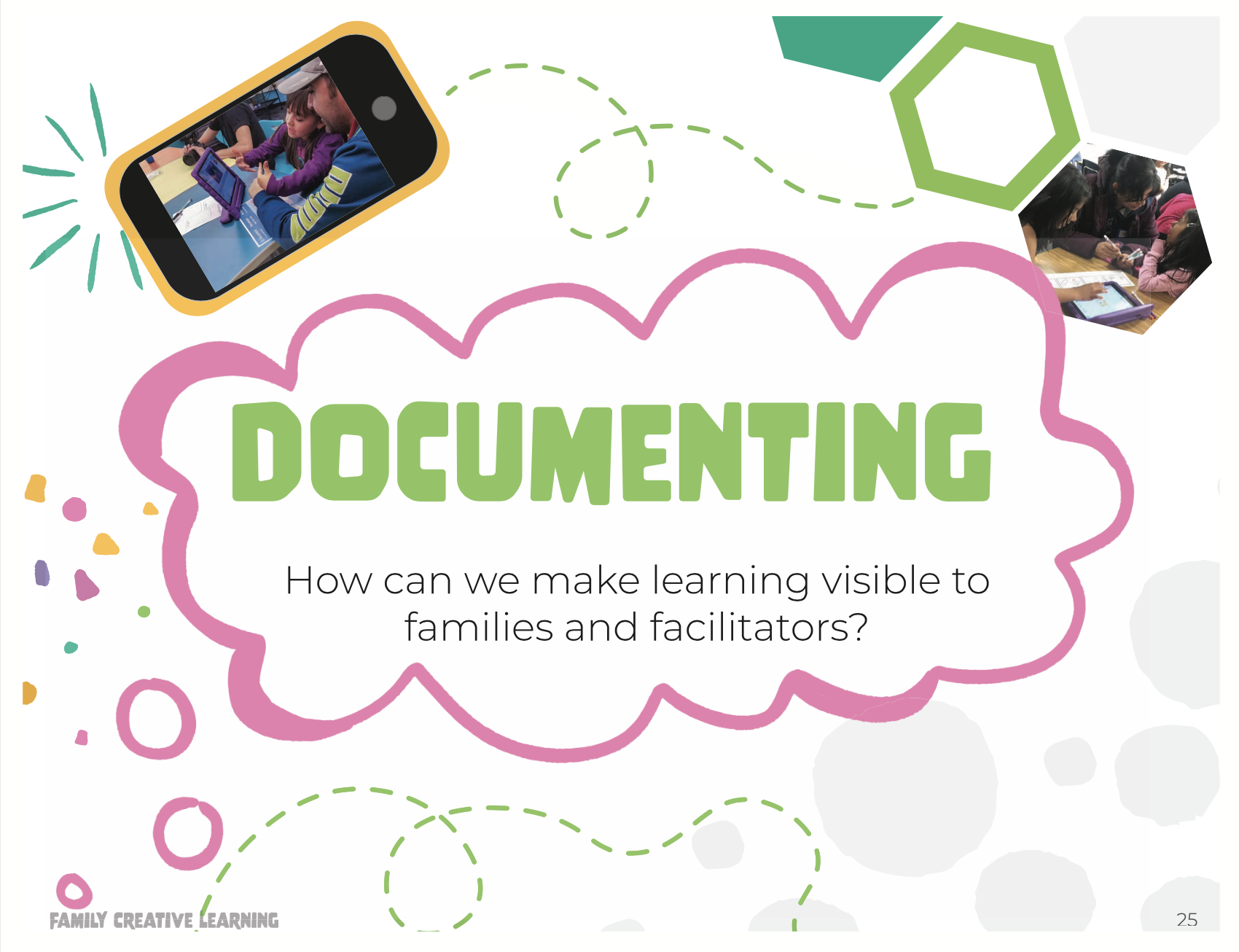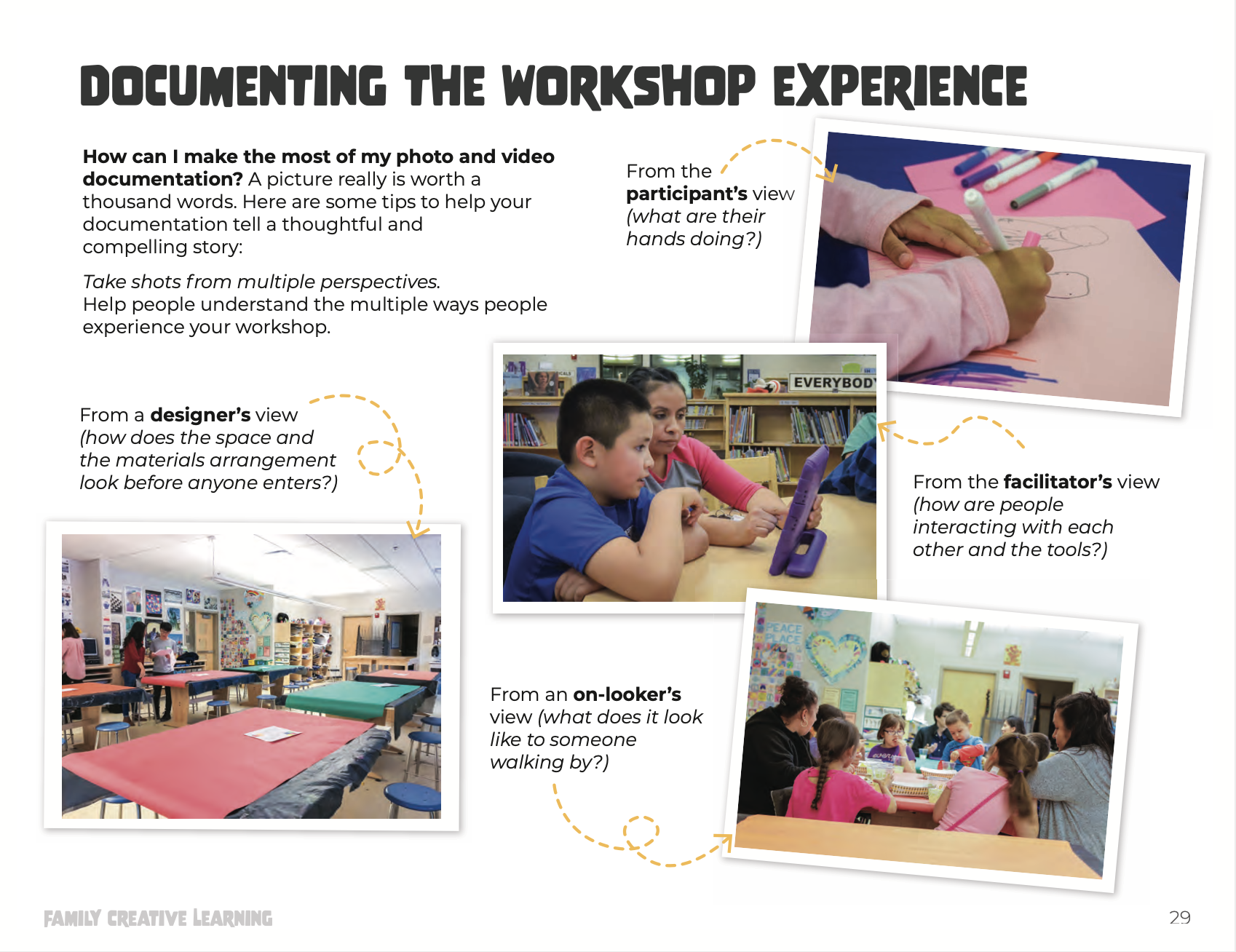We’re excited to share a new version of the Family Creative Learning Facilitator Guide, the ScratchJr Edition! This guide is for educators, community center staff, and volunteers interested in engaging children and their families in creative and equitable experiences with computing. In this guide, you will find imagining and planning activities, tools to prepare your facilitation team, and workshop outlines. Infused throughout the pages of the guide are our design rationale for the overall program framework as well as our visual documentation to illustrate how we implemented the program. Download the guide on the FCL website!
With support from IMLS (Award: LG-96-17-0176-17) and the CU Office of Outreach and Engagement, this FCL model was developed in collaboration with partners at the ideaLAB makerspaces at the Denver Public Library and Boulder Public Library. Together we iteratively designed and implemented the program model in Boulder and Denver neighborhoods over the course of Fall 2017 to Spring 2019. We especially designed the workshops for children and families who have been disconnected from opportunities in computing by reasons of race, ethnicity, immigration status, and socioeconomic status.
What’s new in the guide?
Centering family stories: We recognize that families have a wealth of knowledge — about their children, their communities, and their histories as well as accumulated skills and cultural resources to support their families’ well-being. We wanted to invite families to share their stories in the program to ground their experiences in what they value as a family. Over the course of four workshops, families engage in multiple activities including using ScratchJr to share their stories.
Exploring facilitators stories: Facilitators play key roles in supporting families in equitable and creative learning experiences. We illustrate the practices of facilitators in a collection of visual facilitator stories based on our team’s research of facilitation. We hope that facilitators will use these stories as tools to reflect on their practices and experiences as facilitators support children and families in computing.
Making learning visible through documentation: Inspired by the Reggio Emilia approach to documentation, we share our experiences using documentation (e.g. photos, screenshots, written notes) to make sense of learning experiences together with families and facilitators. We include descriptions of how we collected documentation, how we engaged families and facilitators in the process of documentation, and exercises that we did as a facilitation team to prepare.
How is this different from an earlier Family Creative Learning Facilitator Guide?
We see this guide as a complement (rather than an “upgrade”) to a previous FCL Facilitator Guide released in 2014 and updated again in 2017. One key difference: this particular guide uses ScratchJr and aims to engage kids 5 and up, whereas the previous guide focused on kids 8 and up and used Scratch and Makey Makey. Despite their differences, the guides still build on the same goals and values supporting families to create things that they care about with creative technologies and to see each other in new ways as they design and invent together. Since the first FCL Facilitator Guide was introduced in 2014, we have seen adaptations by organizations like PBS Kids or efforts that remixed bits and pieces of the program model such as the Digital Youth Divas Caring Adult Network. Like previous guides, the guide is licensed under a Creative Commons Attribution-ShareAlike 4.0 International License. We’re excited to see how others learn from and adapt the ideas in this new guide.


